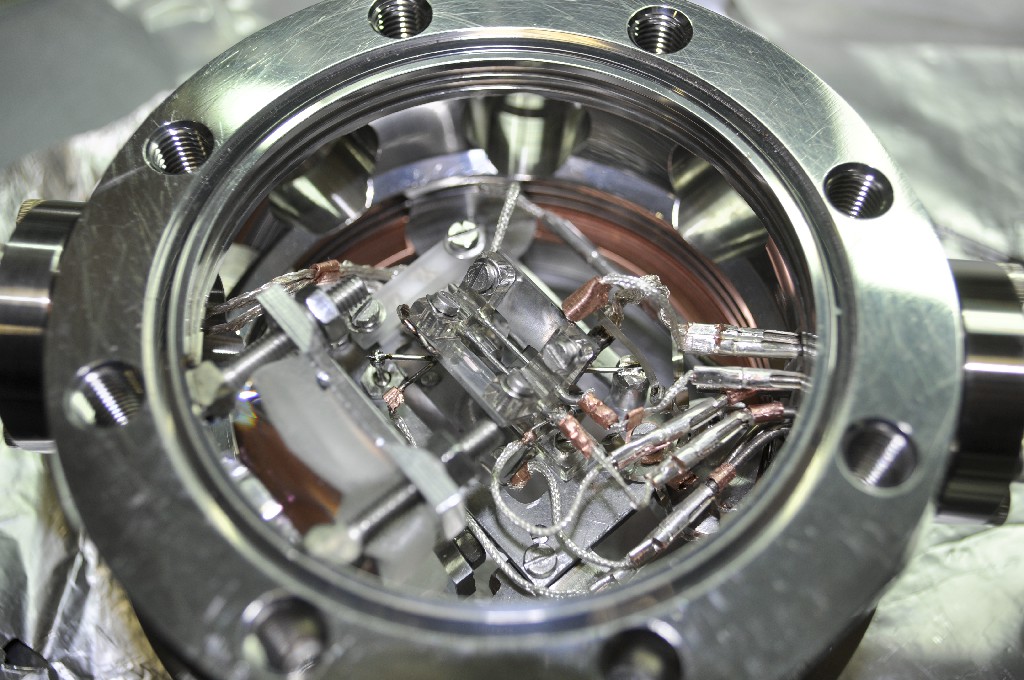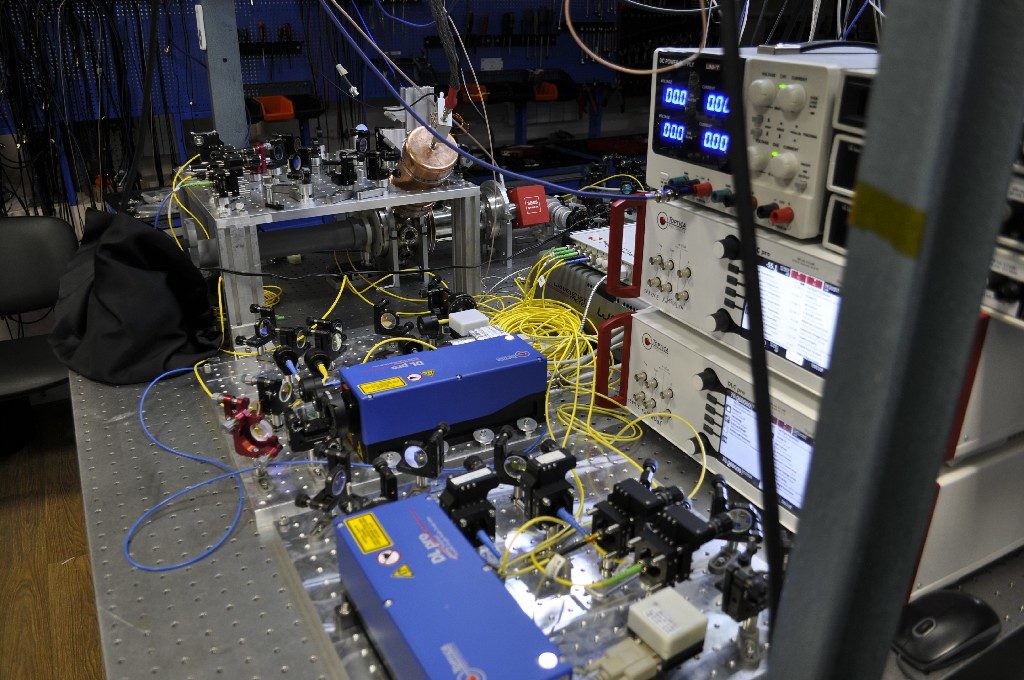
Level Up with Ququarts
back to contentsRussian researchers have developed a two-qudit quantum processor. It is equivalent to a four-qubit quantum computer, a system of four ions that have two potential states each. The development of a quantum processor is the key task supervised by Rosatom within the Quantum Technology roadmap framework.
The Quantum Technology roadmap provides for the development of quantum processors using superconductors, cold atoms and photons. The joint laboratory of the Lebedev Physical Institute of the Russian Academy of Sciences (LPI) and the Russian Quantum Center focuses on the use of ytterbium ions as the most promising technology for a quantum computer.
Each of two ions manipulated by the researchers is a ququart, that is, a qudit for which the number of possible states is four.
A qudit is a qubit that has three or more potential states (or levels). It can be visualized as a multi-story building. “Transition from one state to another is a change in the ion’s electron shell. The wave function of the electron shell changes, too,” says Ilya Semerikov, a researcher at LPI. It is the qudits that are the key achievement of the laboratory.
A qubit is a minimal piece — or a bit — of information in the quantum universe. A bit, which is a unit of information in an ordinary computer, can only have one of two values (states) that are represented as either 0 or 1, but a qubit can also exist in a superposition of these two states. This means a qubit can simultaneously have the value of 0 and 1 during the computation process.
Physically, a qubit is a system of two states, one being the logical 0 and the other 1.
Each state of a ququart can be represented as either of four potential states of two qubits (00, 01, 10 or 11). “If we take two ions in the state of 1 and 4, then the equivalent state of a four-qubit system will be 0011, while the ions in the state of 2 and 3 will have an equivalent of 0110,” Ilya Semerikov explains. Such a computer can run simple algorithms, for instance, those of Deutsch–Jozsa and Grover. The former is used to determine the type of function (either constant or balanced), while the latter performs unstructured search in a database.
“The ion-based platform yields very promising results, which is quite noteworthy as ions were not considered a priority field of study as short as five years ago. This is our first notional result in quantum computing within the roadmap framework,” says Ruslan Yunusov, Head of the Quantum Technology PMO at Rosatom.
What’s next
One of the tasks going forward, which is studied by researchers, is to entangle several qubits. Entangling means that the state of an ion changes in dependence to the state of another. For this reason, it is not the number of elements in the system that matters but their possibility of performing together. Russian researchers managed to entangle two ququarts using the Mølmer–Sørensen method developed in the early 2000s. The method is based on the laser-induced excitation of fluctuations in a trapped-ion system. Correlated fluctuations of ions in a trap serve as a kind of a data bus to transfer quantum information between particles.
Another task is to create a cloud-based platform that will give access to the quantum processor prototype. The first remote experiments have started, but interfaces need to be aligned for a full-fledged integration. This work is planned for 2022 and will be done jointly by researchers from Rosatom and the Russian Quantum Center.
The third task is to improve fidelity (probability of correct calculations). This parameter is currently 66 % for two-qubit operations and 85 % for qudit operations. “Taking into account our capabilities and also the fact that this is our first approach to the problem, we have received encouraging results that enable us to proceed to optimizing the quality of operations,” LPI Director Nikolai Kolachevsky said at a meeting of the Quantum Technology Scientific Council of the Russian Academy of Sciences last December. To compare, the teams of IonQ and Quantinuum, leaders in ion-based quantum computing, are testing processors with 10 to 20‑ion qubits in each. Fidelity of their operations has exceeded 98 %.

Market context
The quantum computing market is at the nascent stage. It is hardly possible to estimate its size yet as expert estimates differ substantially, ranging from USD 38 million to USD 320 million. It is assumed that the market will reach USD 1–2 billion in the next five years and might grow to as large as USD 450–850 billion within the next 15 to 30 years.
Quantum computing attracts attention from both national governments and private companies. Large investments in quantum technology have formed a clear trend over the last few years. According to the Development of Certain High Technologies white book published by the Higher School of Economics (Russia) in 2022, two thirds of the total investments were made after 2018. In 2021, two ‘quantum unicorns’ hit the market. The value of American IonQ is estimated at USD 2 billion, while the market cap of UK-based Arqit is USD 1.4 billion.
Meanwhile, Russia lags behind global leaders (US, China and Germany) but puts much financial, administrative and scientific effort in shortening the distance. For instance, Russia accounts for over 4 % of research papers globally and ranks eighth by the number of patents issued in the quantum field. In addition, the Russian Quantum Center and the Moscow State University launched two pilot cloud-based services for quantum computing in 2021.
Also in 2021, Rosatom invested over RUB 6 billion in the development of quantum technology and research infrastructure. The money was spent to purchase laboratory equipment and materials. It is planned that a total of over RUB 23 billion from government funds and other sources will be spent on the development of a quantum computer by 2024. The result of these efforts will be a cloud-access multi-purpose quantum computer to be put in operation by the end of 2024.




